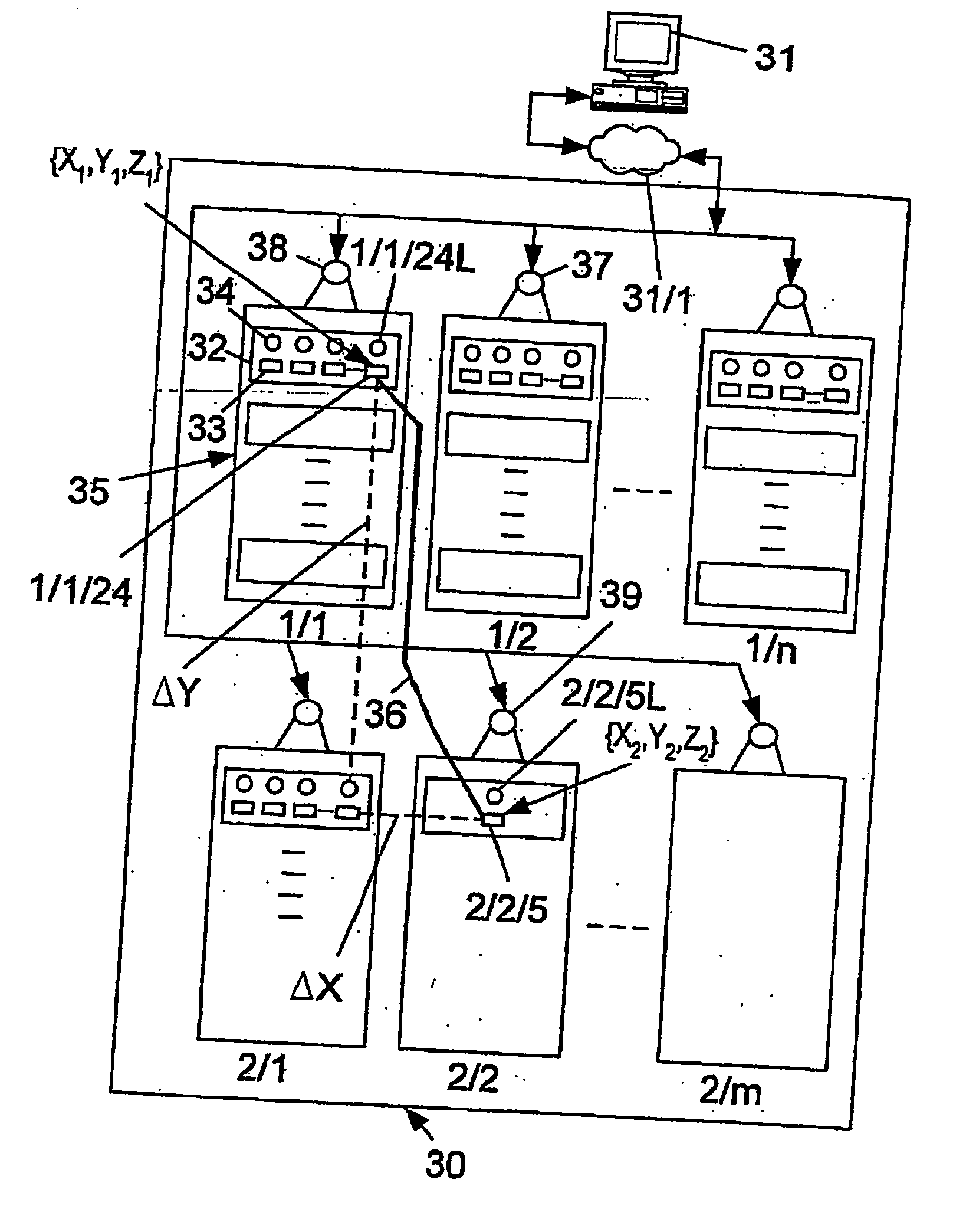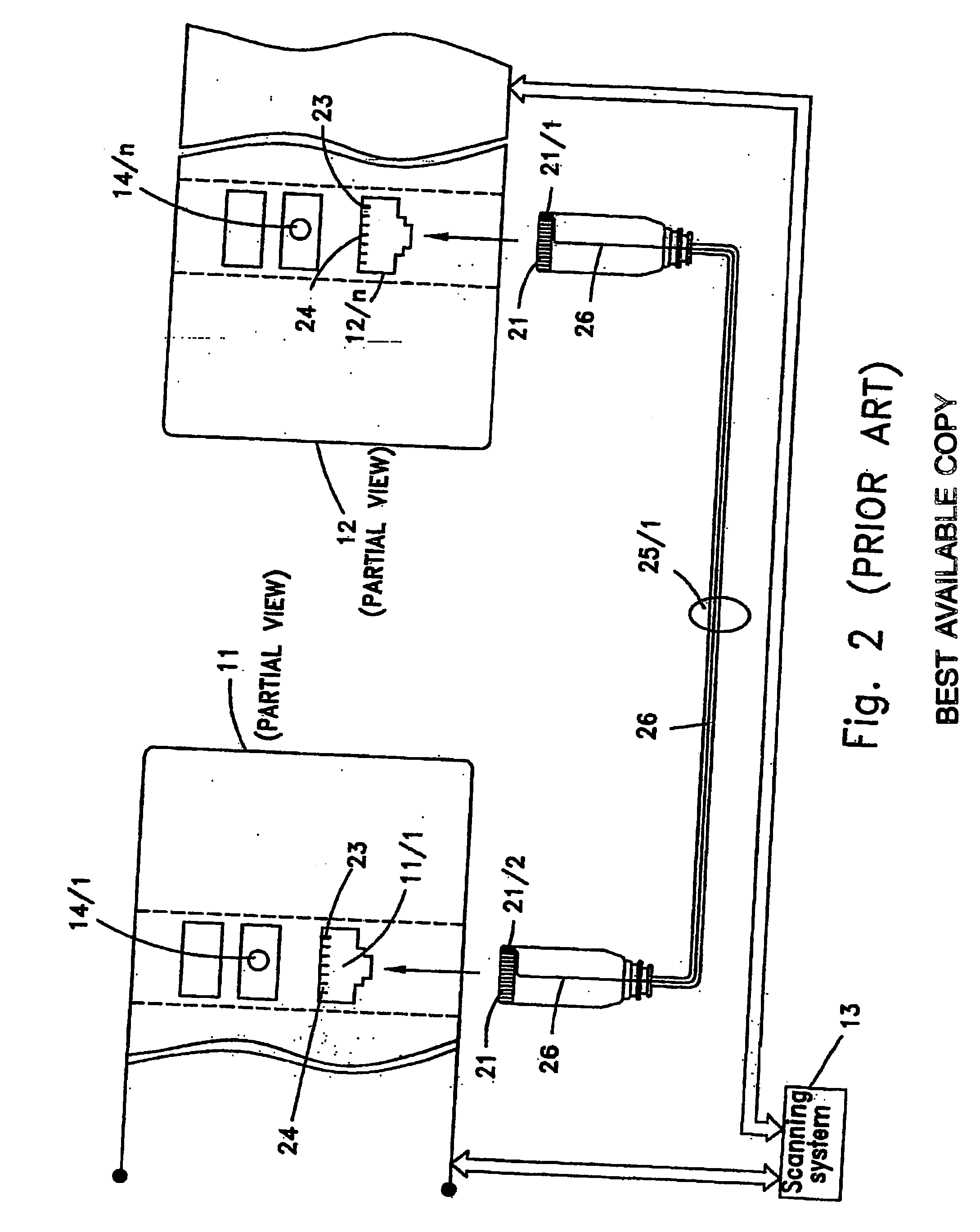Management of large scale cabling systems
a cabling system and large-scale technology, applied in the field of cabling systems, can solve the problems of insufficient patch cord length, and inability to easily and quickly identify ports
- Summary
- Abstract
- Description
- Claims
- Application Information
AI Technical Summary
Benefits of technology
Problems solved by technology
Method used
Image
Examples
Embodiment Construction
[0038]FIG. 1 schematically illustrates an exemplary basic scanning system for determining the connectivity map of connections between two patch panels (prior art). Patch panels 11 and 12 comprise data ports 1 to n. Static, data cables 4 / 1 to 4 / n are connected a first set of separate contacts 11 / 1 to 11 / n of panel 11. Said contacts 11 / 1 to 11 / n are connected to a second set of contacts 12 / 1 to 12 / n of panel 12 forming a cross-connection as indicated, for instance, by the connection of contact 11 / 1 to 12 / n, as shown in the drawing. Predetermined contacts in the first set of contacts 11 and predetermined contacts in the second set of contacts 12 are cross-connected, for allowing flexibility in connecting end-devices (e.g. computer 16 / n) to a corresponding remote end (not shown). Scanning system 13 typically comprises a scanner (25) and a computerized management unit (26) that synchronizes the operation of scanner 25 (i.e., via connection 25 / cont) and handles the content of a connectivi...
PUM
| Property | Measurement | Unit |
|---|---|---|
| Length | aaaaa | aaaaa |
| Distance | aaaaa | aaaaa |
Abstract
Description
Claims
Application Information
 Login to View More
Login to View More - R&D Engineer
- R&D Manager
- IP Professional
- Industry Leading Data Capabilities
- Powerful AI technology
- Patent DNA Extraction
Browse by: Latest US Patents, China's latest patents, Technical Efficacy Thesaurus, Application Domain, Technology Topic, Popular Technical Reports.
© 2024 PatSnap. All rights reserved.Legal|Privacy policy|Modern Slavery Act Transparency Statement|Sitemap|About US| Contact US: help@patsnap.com










